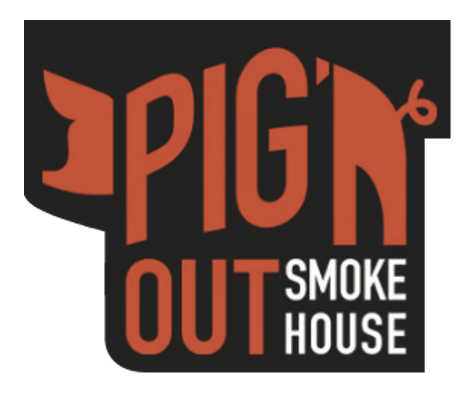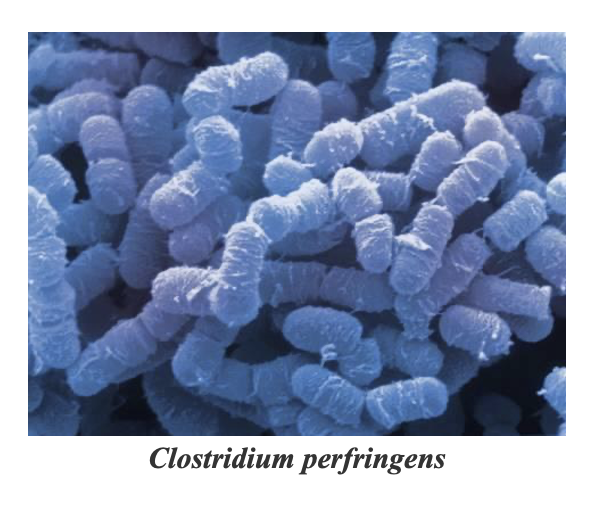Clostridium Perfringens Linked to BBQ
An outbreak of likely Clostridium perfringens was investigated by the Colorado Department of Public Health and Environment and the Jefferson County Public Health starting on August 22, 2023. That day, a school nurse at Evergreen County Day School reported 40 or so illnesses following a school event on August 21, 2023. The outbreak was given the state ID “2023-30-129.”

A total of 122 primary cases were identified. Of these, for whom gender was known, 37 were male (30.3%) and 35 were female (28.7%). Cases were between 1 and 74 years of age, for whom the age was recorded (majority between 18 and 49 years). Illness onsets were recorded to have occurred between August 21 and August 23, 2023. Illnesses consisted of mostly diarrhea and cramping, along with some nausea, fatigue, fever, and vomiting. Most cases fell ill within a day of exposure. No cases were hospitalized, and no cases died. One case had a stool specimen tested.
A case-control study, conducted via a RedCap survey with all participants of the BBQ event, and a food preparation review were conducted in response to this outbreak. A mass communication was sent out to the school asking symptomatic individuals to submit stool samples and offer information on their symptoms. As of August 23, about 122 responses were received from families with symptoms. Three individuals agreed to submit stool samples, but only one sample was collected on August 24; Unfortunately, this sample did not confirm a pathogen. However, given the reported symptoms and incubation period, it was determined with 99.24% probability that the pathogen was C. perfringens.
Exposure was suspected to have occurred on August 21 in Jefferson County. The common exposure shared among all ill cases was a grade K-8 back-to-school BBQ hosted by the school. Food for this event was prepared by a brick-and-mortar restaurant, Piggin’ Out Smokehouse, and then transported by and served from a food truck at the school. Food was delivered to about 400 people. Menu items included macaroni-and-cheese, chicken, pork, sausage, beans, kale salad, and quinoa salad. Beverages were iced tea, lemonade, and water.
An original outbreak inspection at the restaurant occurred on August 22, 2023. It was found that the walk-in-cooler was not functioning properly. On August 24, a follow up inspection occurred at Piggin’ Out Smokehouse. Based on epidemiological and environmental evidence, pork and chicken were the suspected sources of illness.
What is Clostridium perfringens?
Clostridium perfringens is a gram-positive microorganism (bacterium) that can produce disease in both humans and livestock.[1] It can cause wound infections like gas gangrene (clostridial myonecrosis), enteritis/enterocolitis (including one of the most common human food-borne illnesses), and enterotoxemia (where toxins produced in the intestine are absorbed and damage distant organs such as the brain). The virulence of this spore-forming anaerobe is largely attributable to its copious toxin production.

C. perfringens food poisoning commonly occurs as outbreaks in institutions where food is prepared in large quantities. [2] Prophylactic measures to prevent food poisoning should focus on restricting multiplication of vegetative cells in cooked foods. Cooking at the proper temperature and for the right time, along with rapid cooling after cooking with subsequent refrigeration, is the most effective action to control the multiplication of C. perfringens and thus avoid food poisoning outbreaks.
What are the typical symptoms of Clostridium perfringens?
Clostridium perfringens bacteria are one of the most common causes of food poisoning. CDC estimates that the bacterium causes nearly 1 million foodborne illnesses in the United States every year.[3] People generally experience symptoms of Clostridium perfringens infection 6 to 24 hours after consuming the bacteria or toxins. Clostridium perfringens toxins cause abdominal pain and stomach cramps, followed by diarrhea. Nausea is also a common symptom. Fever and vomiting are not normally symptoms of poisoning by Clostridium perfringens toxins. Illness from Clostridium perfringens generally lasts around 24 hours and is rarely fatal.
Outbreaks of C. perfringens food poisoning tend to happen in settings where large groups of people are served and keeping food at proper temperatures may be difficult—for example, hospitals, school cafeterias, prisons, nursing homes, and large events with catered food. Most of these outbreaks happen in November and December. Many of them have been linked to popular holiday foods, such as turkey and roast beef.
The Type C strain of Clostridium perfringens can cause a more serious condition called Pig-bel Syndrome. This syndrome can cause death of intestinal cells and can be fatal.[4]
Where does Clostridium perfringens come from?
Clostridium perfringens and its toxins are found everywhere in the environment, but human infection is most likely to come from eating food with Clostridium perfringens in it. The majority of outbreaks are associated with undercooked meats, often in large quantities of food prepared for a large group of people and left to sit out for long periods of time. Because of this, it is sometimes referred to as the “food service germ.” Meat products such as stews, casseroles, and gravy are the most common sources of illness from C. perfringens. Most outbreaks come from food whose temperature is poorly controlled. If food is kept between 70 and 140 F, it is likely to grow Clostridium perfringens bacteria. Foods cooked in large batches and held at unsafe temperatures are typically involved in outbreaks of C. perfringens food poisoning. Specific foods commonly linked to C. perfringens food poisoning include:
- Poultry, such as turkey and chicken
- Meat, such as beef and pork
- Gravy
To prevent infection by Clostridium perfringens, a prudent food preparers and handlers follow these basic well recognized guidelines:
- Cook foods containing meat thoroughly
- If keeping foods out, make sure they maintain a temperature of 140 F (60 C)
- When storing food in the refrigerator, divide it into pieces with a thickness of three inches or less so that it cools faster
- Reheat foods to at least 165 F (74 C)
How is Clostridium perfringens diagnosed and treated?
C. perfringens food poisoning is diagnosed when a laboratory test detects the bacteria or toxin in a patient’s stool (poop) sample, or the bacteria are found in food linked to the illness. But most people with C. perfringens food poisoning do not receive a diagnosis. That’s because clinical laboratories do not routinely test for C. perfringens, and public health laboratories usually test for it only when it is the suspected cause of an outbreak. Most people recover from C. perfringensfood poisoning without antibiotics. Drink extra fluids as long as diarrhea lasts to prevent dehydration.
[1] Mehdizadeh Gohari, I., A. Navarro, M., Li, J., Shrestha, A., Uzal, F., & A. McClane, B. (2021). Pathogenicity and virulence of Clostridium perfringens. Virulence, 12(1), 723-753. https://www.tandfonline.com/doi/full/10.1080/21505594.2021.1886777
[2] García, S., Vidal, J. E., Heredia, N., & Juneja, V. K. (2019). Clostridium perfringens. Food Microbiology: Fundamentals and Frontiers, 513-540. https://onlinelibrary.wiley.com/doi/abs/10.1128/9781555819972.ch19
[3] Prevent illness from C. perfringens. (2023, March 24). Centers for Disease control https://www.cdc.gov/foodsafety/diseases/clostridium-perfringens.html
[4] Posthaus, H., Kittl, S., Tarek, B., & Bruggisser, J. (2020). Clostridium perfringens type C necrotic enteritis in pigs: diagnosis, pathogenesis, and prevention. Journal of veterinary diagnostic investigation, 32(2), 203-212. https://journals.sagepub.com/doi/full/10.1177/1040638719900180
Republished with permission from Bill Marler and Marler Clark. Copyright (c) Marler Clark LLP, PS. All rights reserved.
Source: https://www.marlerblog.com/case-news/clostridium-perfringens-linked-to-bbq/
Anyone can join.
Anyone can contribute.
Anyone can become informed about their world.
"United We Stand" Click Here To Create Your Personal Citizen Journalist Account Today, Be Sure To Invite Your Friends.
Please Help Support BeforeitsNews by trying our Natural Health Products below!
Order by Phone at 888-809-8385 or online at https://mitocopper.com M - F 9am to 5pm EST
Order by Phone at 866-388-7003 or online at https://www.herbanomic.com M - F 9am to 5pm EST
Order by Phone at 866-388-7003 or online at https://www.herbanomics.com M - F 9am to 5pm EST
Humic & Fulvic Trace Minerals Complex - Nature's most important supplement! Vivid Dreams again!
HNEX HydroNano EXtracellular Water - Improve immune system health and reduce inflammation.
Ultimate Clinical Potency Curcumin - Natural pain relief, reduce inflammation and so much more.
MitoCopper - Bioavailable Copper destroys pathogens and gives you more energy. (See Blood Video)
Oxy Powder - Natural Colon Cleanser! Cleans out toxic buildup with oxygen!
Nascent Iodine - Promotes detoxification, mental focus and thyroid health.
Smart Meter Cover - Reduces Smart Meter radiation by 96%! (See Video).





